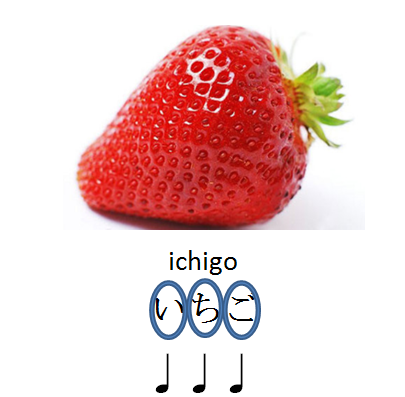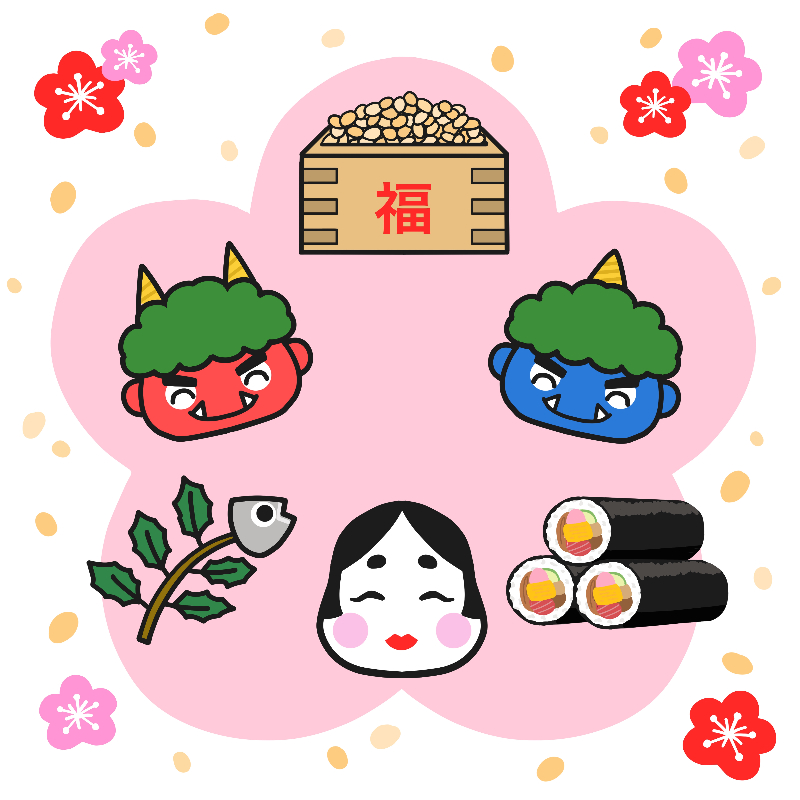
Taiko and the rhythm of Japanese
 Students learn about the rhythm of Japanese focusing on haku (mora). In activities using their hands, feet drums etc. students become familiar with the pronunciation of Japanese words.
Students learn about the rhythm of Japanese focusing on haku (mora). In activities using their hands, feet drums etc. students become familiar with the pronunciation of Japanese words.
Students are introduced to Japanese taiko drums and their role in Japanese social settings through quizzes. They then learn about the basic rhythms of Japanese by counting and beating out the sound. They use task sheets to connect the sounds to the written script, while practising correct pronunciation.
Part 1: ○× Quiz about Taiko
Slides 1-6
Quiz Content:
When do we use taiko in Japan?
Q1: Answer: ○ When cheering for a sports team.
⇒Taiko are used during sports events in Japan to cheer on the players.
Q2: Answer: ○ during traditional dances
Q3: Answer: ○ bon-odori
Q4: Answer: × tea ceremony
⇒Japanese tea ceremonies are carried out in a very quiet atmosphere.
Q5: Answer: × wedding ceremony
⇒Weddings are formal events, and are therefore carried out quietly as well.
Part 2: Comparing drums from around the world
Slides 7-8
Teacher introduces many different kinds of drums.
みなさんの国ではどんなたいこをつかいますか?どんなときつかいますか?
What kind of drums are there in your country? When are they used?
★Useful websites related to this
https://www.youtube.com/watch?v=7lSmLnWpAjc
– This video shows how the skin of the taiko is made. It’s made from raw cow hide, with different parts of the hide used for different types of taiko. The hide is soaked in water, stretched, and shaved, then once again carefully stretched out until it is thin enough to have the exact sound required for the taiko. (23/05/2015)
https://www.youtube.com/watch?v=7tREzw1Dp2s
– This video shows the entire process of a taiko being made. First the body of the taiko is carved from the trunk of an ancient tree. The outside is carved into a circular shape, and the inside is hollowed out. Then the drums are dried for up to 5 years, before being sanded and polished. The inside is carved with designs that determine the sound of the taiko. Next the wood is lacquered and stained. Finally the skin (made from the hide of a cow) is stretched and nailed into place. (14/12/2012)
Part 3: Let’s practise the beat with waribashi on your taiko
Slides 9-11
Make your own taiko!
Use pencils, straws, wooden sticks or a set of disposable chopsticks for bachi (drumsticks) to play the taiko.
Use tins, paper cups, paper plates, plastic bottles or other containers for your taiko.
★Useful websites related to this
https://www.youtube.com/watch?v=kFaKODBnNwE
– A very simple taiko can be made out of a balloon and masking tape. Blow up the balloon then let all the air out again (so it’s easier to stretch). Cut the narrow part of the balloon off, then stretch out the remaining larger part of the balloon around the hole of one of the circular ends of the masking tape. (01/06/2014)
https://www.youtube.com/watch?v=qBWy9TPwqsE
– A taiko can also be made out of a bucket and a plastic bag. Cut the plastic bag so that there is enough plastic to cover the top of the bucket. Sticky tape the edges of the plastic to the bucket, making sure that the plastic is taut across the top of the bucket. (01/01/2013)
Slides 12-25
Get a feel for the rhythm of Japanese by using the beat of a taiko
The slides contain both hiragana and katakana words for fruit.
Through this practice, students can familiarise themselves with haku (拍) or mora, which helps them to develop their pronunciation and orthography skills.

Teacher's notes
Worksheet 1
The worksheet contains both hiragana and katakana words for fruit as shown in the PPT.
PPTの中にあるフルーツの名前を確認しましょう。カタカナ(バナナ、レモン、メロン)も含まれています。

Worksheet 2
This worksheet contains names of prefectures in romaji, showing the pronunciation e.g. Toukyou
日本の県の名前を確認しましょう。促音 (ほっかいどう他)、長音 (とうきょう他) も含まれています。

Worksheet 3
This worksheet gives the names of cities around Australia in English. Students can search for the Japanese versions of the names as a research activity before completing the task. Students can discover new ways of writing English sounds in katakana such as in ダーウィン.
オーストラリアの都市の名前を確認しましょう。長音やカタカナだけの音 (ダーウィン)も含まれています。

Worksheet Answers

Resource created by Naoko Takatsuka, Yasuhiro Nakagawa, Tomoko Semba (July 2016).




